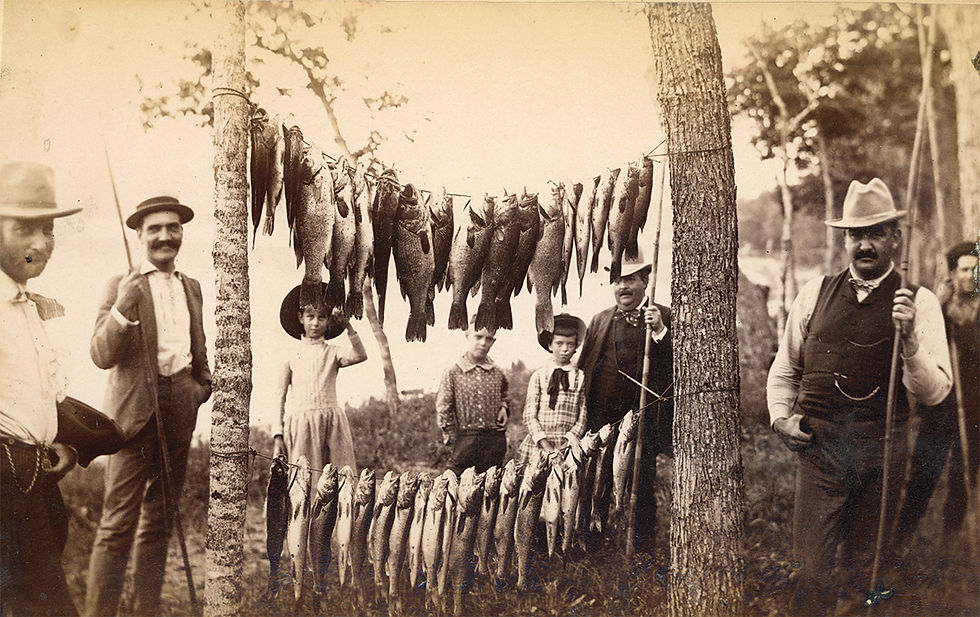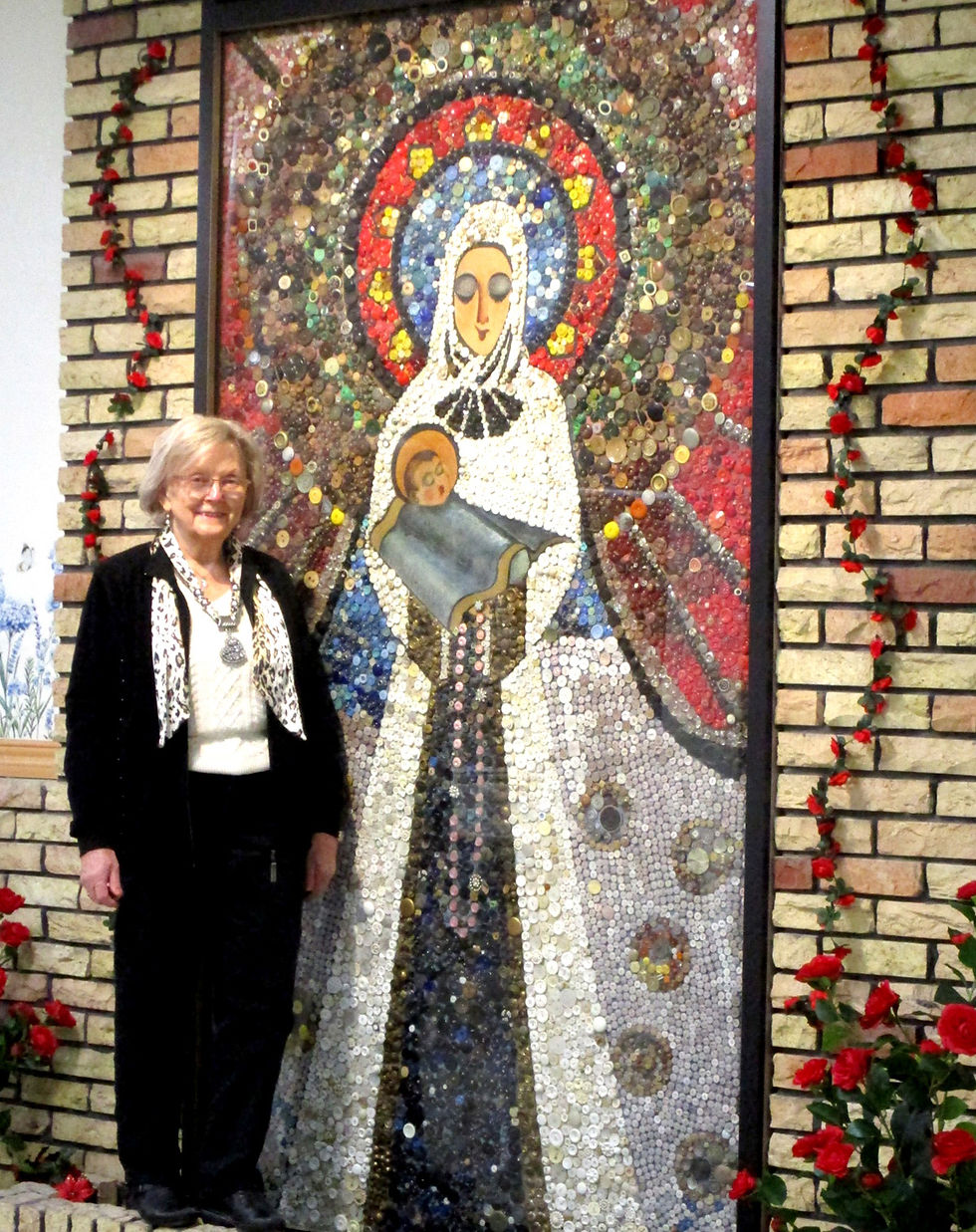Knitting to help others
- Sr Perspective

- Jun 10, 2024
- 6 min read
Milaca man has knitted 4,000 caps for cancer patients By Bill Vossler

When Ken Nelson of Milaca began knitting caps for cancer patients starting 25 years ago, he had no idea how many he would make. Certainly not 4,000.
As part of a volunteer group from his Assembly of God church, he and his wife Kathleen traveled all over the United States building churches. “That includes Alaska,” Ken said, “and twice to Hawaii. That’s when we found out that after undergoing chemotherapy for cancer, many patients get chilled, or get really cold. Many are women, and they start losing their hair, and some get bald. That’s when we discovered they needed hats, and that people like me could make hats for them. So I thought I would knit hats to help out.”
Initially he didn’t know how to do it. “I’d never knitted before, and I didn’t have any background in knitting.”
After he spotted small looms in Wal-Mart he figured one of them might work.
“They were made of plastic with 32 knobs to wrap the yarn. So I bought one. Using the loom’s instructions, I practiced, and along with internet information figured out how to do it,” he said.
The loom didn’t work that well, he said. “The hats that were made with it were looser than I liked, so I made several looms out of wood so I could add two extra pins so the hats would come out tighter. It’s really so simple it’s scary. You take a piece of yarn and wrap it around the loom twice on each of the 34 little pegs, then take a darning needle and flip the yarn over 10 times, which gives you the double brim on the hat. After you tie it off, you have the brim, then add 14 to 18 more wraps of yarn, depending on the size of the hat you want to make, close the top, and you have a hat. Nobody turns down the hats, no matter what size they are.”
Once he’d done a few, he said making them became automatic. “You can do it without looking. During every football game I watched I got several made, and also during Wheel of Fortune and Jeopardy. You don’t have to look at what you’re doing, so you can keep making more hats. It takes me an hour and three-quarters to two hours to make one.”
To make 4,000 hats, Ken needed a lot of yarn.
“But I never bought any yarn. It was always donated. At flea markets we found yarn, and when we said we were using it to make hats for cancer patients, invariably they donated it to us. With fewer older people knitting, there is yarn laying around. When I asked for yarn, boxes and boxes and boxes of yarn of every color of the rainbow were donated. I combined three or four colors to make a hat. Some were ugly, some were beautiful, and no two were ever the same. But they all did what they had to do: keep someone’s head warm.”
“Other materials didn’t work, like macramé, which was too thick, and baby yarn was too fine and thin. To make 4,000 hats I figured I used 386 miles of yarn,” he said.
Ken said his daughters cheered him on, as well as his wife. “I don’t get to see the patients in the cancer centers that get the hats, but I’m told time and time again how happy people are to get them, and how much they enjoyed them.”
From there, Ken donated hats to various places and they ended up across the globe.
“After the Japanese tsunami that wiped out a nuclear power plant, I shipped 250 hats there through our church relief effort. I gave hats to a group going to Russia. They brought back a picture of an elderly, toothless woman who was smiling hugely, wearing one of my hats.”
Most of his hats are donated locally. “Otherwise shipping charges would be too great. At a cancer center I don’t have to pay any shipping charges. Almost every cancer center has been real happy to have hats to give to their patients.”

He added that most of his donations are in the 50-75 hat range. “So after getting rid of them, I started making more. My wife liked that I was making the hats, too, because I stayed out of her hair,” he laughed. “She enjoyed it too because she knew the patients would be wearing them and she always helped me out trying to get yarn.”
“After 1,000, then 2,000, then 3,000, I thought, ‘That’s quite a few hats.’ I set 4,000 as a goal, and about the same time I finished my four thousandth hat, my age began creeping up on me, and I got bad arthritis in my hands, so I couldn’t make any more. I’m 84.”
He says a great need still remains for hats in cancer centers.
Ken has done much more in his life than knit hats. He has also done awe-inspiring acts like converting an old barn into a Bible School called Glory Barn in Motley. “I bought the 3/8 plate steel and built a huge wood-burning stove to heat the whole building, and helped with other parts of it. A very satisfying thing to do.”
He also built an airplane. “It was a kit that came with an aluminum frame and all the parts. In the basement of our house I built two wings and the fuselage, made of fiberglass. I epoxied the fiberglass together with a ton of epoxy,” he laughed. “In the process I ruined the basement floor because I got so much epoxy on it.”
He brought out the wings and fuselage from the basement, and added the rest outside, making a two-seat experimental aircraft. “I spray painted it a nice red and blue, and added a Rotex engine. When I started it, it worked, so I pulled it behind the car to the airport to start flying it. The FAA inspected and approved it, and gave the tail an official number of N10KN. We both took flying lessons, and flew it for a few years until the insurance got too expensive. Kathleen was a better pilot than I was. When we stored it we pulled the wing pins, folded them up, and put the airplane in the garage.”
Ken said one huge advantage of the airplane was landing and taking off. “It could take off in a very, very short distance, and land on a short runway. It didn’t fly fast, 65-75 knots.”
He added they never had any close calls. “It was a good little airplane and it flew for many years.”
Then there was scuba diving all over the world. “Kathleen and I took scuba classes and dived all over the Caribbean. I also became a dive master, next to a dive instructor. We dove at West Palm Beach, and Roatan Honduras where I took a six-day underwater photography class taught by an underwater photographer teacher. ”
He really enjoyed seeing all the varied fish, he said. “You could dive down to the bottom and see fish you can’t see on the top. The Caribbean has real clear water. Hawaii had a wide variety of pretty fish of all different colors.”
Another job for Ken put him in charge of all the photographic printers in the world. “I flew all over the world to fix them.”
In the U.S. Air Force, in four years, he worked his way up to be a flight crew member on a four-star general’s aircraft. “I guess I’m always looking for a challenge.”

“One of my daughters had breast cancer, so that was again why I started making the hats for cancer patients. I know I touched just a very small need for hats for cancer patients. My whole life has been very blessed.”
He thought it all came from being the kind of person that finishes what he starts. “If I’m told I can’t do something, I’ll work that much harder to make sure that I can do it.”
Ken said growing up on a farm taught him many lessons. “We had chores to do and lived in a disciplined environment. I was the oldest boy, and I worked on different farms during the summer, loading manure from calf pens that I hauled into fields and dumped it. While I was going to high school I got a job setting pins in a bowling alley, because I wanted a car. That was a goal I set, and I got it, and away I went.”
Ken said he would encourage other people to make hats. “I would really encourage it. It’s a fantastic hobby that doesn’t interfere with your life, and it helps cancer patients make their lives a little easier. Anyone who wants to help out can do the same thing I did--buy a cheap loom, go to garage sales to get yarn donated, practice, and make a boxful of hats. It’s such a simple thing, but it means so much to these patients.”




Comments